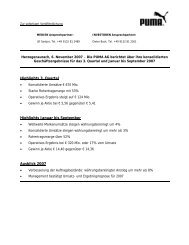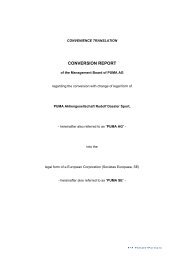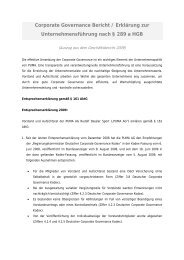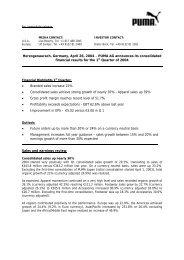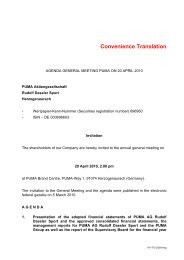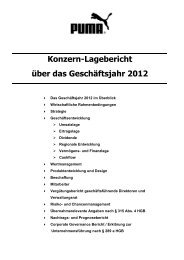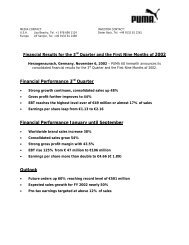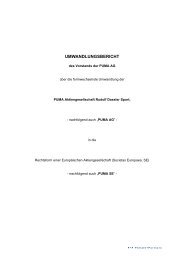PUMA.Safe Environmental Handbook Volume 1 - About PUMA
PUMA.Safe Environmental Handbook Volume 1 - About PUMA
PUMA.Safe Environmental Handbook Volume 1 - About PUMA
Create successful ePaper yourself
Turn your PDF publications into a flip-book with our unique Google optimized e-Paper software.
4.2.3.3 Recycling<br />
Means any recovery operation by which waste materials are reprocessed into products, materials or substances<br />
whether for the original or other purposes. It includes the reprocessing of organic material but does not include energy<br />
recovery and the reprocessing into materials that are to be used as fuels or for backfilling operations.<br />
4.2.3.4 Energy Recovery<br />
Energy recovery from waste is the conversion of non-recyclable or reusable waste materials into useable heat, electricity,<br />
or fuel through a variety of processes, including combustion, gasification, pyrolization, anaerobic digestion, and landfill<br />
gas (LFG) recovery. This process is often called waste-to-energy (WTE). Waste-to-energy meets the two basic criteria for<br />
establishing what a renewable energy resource is—its fuel source (waste) is sustainable and indigenous. Waste-toenergy<br />
facilities recover valuable energy from waste after efforts to “Prevent, Reuse, and Recycle” have been<br />
implemented.<br />
4.2.3.5 Landfill & Incineration without energy recovery<br />
If none of the above possibilities are feasible to use, the only final way for the waste treatment will be the disposal or<br />
the incineration of the waste. Therefore, it is important to recognize that the disposal of waste to landfills can only be<br />
seen as a temporary solution because physically it is only a movement of the waste to another place. In case landfills will<br />
be used for the final disposal of the waste, it has to be sure that these landfills will be safeguarded to avoid any<br />
migration of harmful substances into the ground. Incineration without energy recovery, on the other hand, is not<br />
encouraged because it totally destroys the material removing the possibility of recovering its remaining value.<br />
In any case, all relevant laws and regulations of the applicable country have to be followed and the disposal route of<br />
waste must be entirely documented by official waste contracts or invoices. Following this procedure is even more<br />
important for any hazardous waste which may be generated.<br />
4.2.4 Waste reduction, re-use and recycling examples<br />
Depending on the type of production there are many existing good practices on how to minimize waste to landfill or<br />
incineration and focus on material efficiency or re-use and recycling instead:<br />
4.2.4.1 Reduce: Increase marker efficiency to minimize cutting waste<br />
Use of automated cutting systems to minimize cutting waste<br />
Optimized fabric orders to minimize the amount of unused fabric<br />
4.2.4.2 Reuse: Reuse the unused fabrics for other production<br />
Reuse of fabric cut-outs for other purposes (smaller items or as filling for<br />
23






